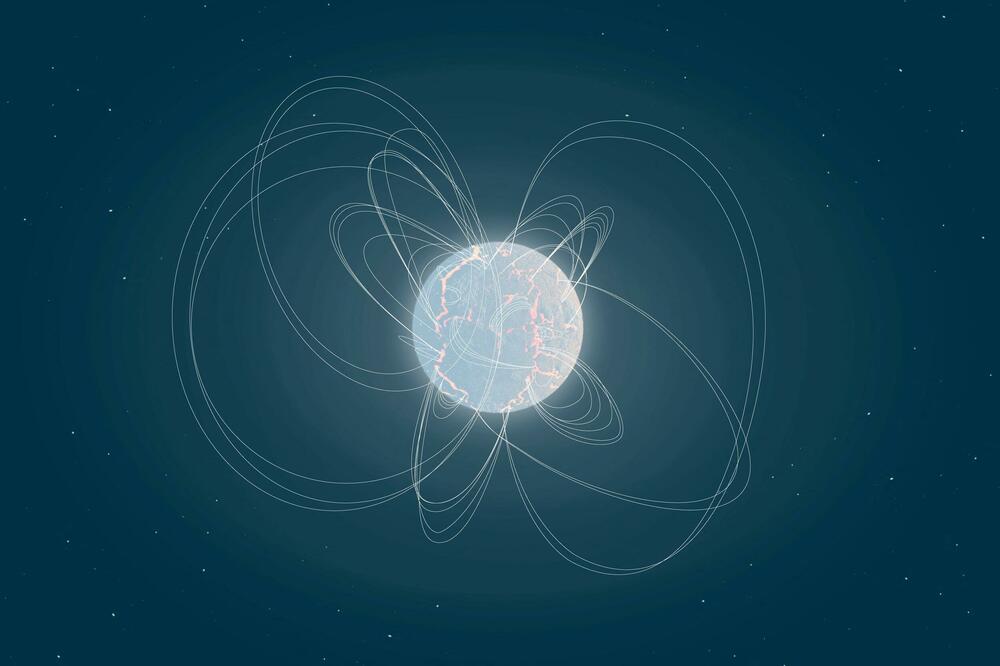Magnetars are among the most extreme objects in the universe, a class of compact stellar remnants called neutron stars that possess extremely strong magnetic fields. From time to time, they produce huge bursts of gamma rays in the most powerful non-destructive release of energy known in the cosmos, Reuters writes.
Scientists have now discovered the most distant known example of one of these eruptions, called a giant flare, from a magnetar located in a galaxy called Messier 82, or M82. This wave of gamma rays, the most energetic form of light, released in just a tenth of a second the amount of energy our Sun would emit over a period of about 10.000 years, they said.
Only two confirmed giant flares have been observed in our own Milky Way galaxy, in 2004 and 1998, and one previous one in another galaxy, in 1979 in the Milky Way's neighboring Large Magellanic Cloud, the researchers said.
"Giant flares are very rare events," said astrophysicist Sandro Meregetti of the Italian National Institute of Astrophysics (INAF) in Milan, lead author of the study published today in the journal Nature. "The Milky Way contains at least 30 magnetars, probably many more , which have not been seen emitting giant flares".
M82, called the "cigar galaxy" because it has an elongated cigar-like shape when viewed from the side, is 12 million light-years from Earth in the constellation Ursa Major.
A light year is the distance light travels in one year, 5,9 trillion miles (9,5 trillion km). The giant magnetar flare from the Large Magellanic Cloud was about 160.000 light-years from Earth, according to Reuters.
The M82 giant flare was the most distant known, but not the most energetic. The one observed in 2004 had an energy equivalent to the time period of about a million years of the sun's effect.
Although there are more energetic cosmic events such as supernova explosions at the end of the life of a massive star and gamma ray bursts caused by the merger of two neutron stars, they involve destruction - unlike giant flares. Magnetars also emit occasional bursts of gamma rays and X-rays at lower energy levels than giant flares.
Neutron stars are born in the explosion and collapse of stars eight to 25 times the mass of the Sun at the end of their life cycle. They compress one or two times the mass of the Sun into a sphere the size of a city.
"They are the most compact and densest astrophysical objects. They are as dense as atomic nuclei," said INAF astrophysicist and co-author of the study, Mikela Rigozelli, about neutron stars.
The main feature that sets magnetars apart from other neutron stars is a magnetic field 1.000 to 10.000 times stronger than the magnetism of an ordinary neutron star and a trillion times greater than the magnetic field of the Sun.
"We can say that magnetars are neutron stars powered by their own magnetic energy. This does not happen in ordinary neutron stars," said Meregeti.
"The giant flare originates from the reconfiguration and reconnection of the magnetar's magnetic field," Rigozeli added.
The magnetar in this survey is believed to be spinning rapidly, perhaps completing a rotation every few seconds. Its giant flare was discovered on November 15, 2023 by the European Space Agency's space observatory in a galaxy with a star formation rate much higher than that of the Milky Way, M82 - dubbed a "starburst galaxy".
"The fact that Messier 82 is so active in star formation is relevant to our discovery," Rigozelli said. "In such an active galaxy, there are many young, massive stars like those that evolve into supernova explosions and give birth to neutron stars. It would be doubtful to detect a giant magnetar flare coming from a quiescent galaxy."
Bonus video:




